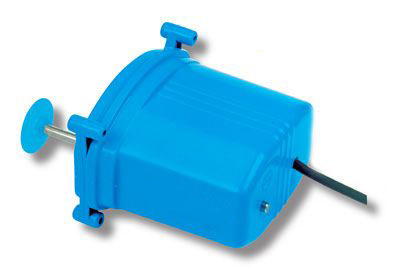Product added to cart
F1238
Professional 40/120 jumping motor for turning eggs in incubators
€180.25
The presented product is used to automatically turn eggs during the incubation process.It is characterized by precision - it allows for rhythmic rotation of eggs.
One full cycle (rotation) occurs every 4 hours.
The use of the engine protects the developing embryo against various types of threats - the death of the embryo or sticking the yolk to the shell.
The operation of the engine is not too complicated. The metal mandrel by cyclic sliding out and inserting causes rotation. With the help of this element, the automation of rotation (Fig. 2) occurs by moving the substrate with eggs - then the eggs must be placed in partitions so that their free rotation is possible or by tilting the tray with eggs - eggs should lie on a tilting tray, which will allow them to be tilted in the range from - 40o to + 40 o.
The product, according to the manufacturer's recommendations, is intended for nesting apparatus with a larger capacity, where a powerful engine is needed to turn the eggs. However, it can also be safely applied to incubators of average capacity. The number of eggs we want to incubate is basically arbitrary - it depends on the spacers used.
The engine is accompanied by a set of elements necessary for its installation in the incubator.
The motor is powered directly from the mains with a power of 230V.
One full cycle (rotation) occurs every 4 hours.
The use of the engine protects the developing embryo against various types of threats - the death of the embryo or sticking the yolk to the shell.
The operation of the engine is not too complicated. The metal mandrel by cyclic sliding out and inserting causes rotation. With the help of this element, the automation of rotation (Fig. 2) occurs by moving the substrate with eggs - then the eggs must be placed in partitions so that their free rotation is possible or by tilting the tray with eggs - eggs should lie on a tilting tray, which will allow them to be tilted in the range from - 40o to + 40 o.
The product, according to the manufacturer's recommendations, is intended for nesting apparatus with a larger capacity, where a powerful engine is needed to turn the eggs. However, it can also be safely applied to incubators of average capacity. The number of eggs we want to incubate is basically arbitrary - it depends on the spacers used.
The engine is accompanied by a set of elements necessary for its installation in the incubator.
The motor is powered directly from the mains with a power of 230V.
Fast shipping
14 days for return
Over 500,000 satisfied customers
Availability
Available in 14 days
The presented product is used to automatically turn eggs during the incubation process.It is characterized by precision - it allows for rhythmic rotation of eggs.
One full cycle (rotation) occurs every 4 hours.
The use of the engine protects the developing embryo against various types of threats - the death of the embryo or sticking the yolk to the shell.
The operation of the engine is not too complicated. The metal mandrel by cyclic sliding out and inserting causes rotation. With the help of this element, the automation of rotation (Fig. 2) occurs by moving the substrate with eggs - then the eggs must be placed in partitions so that their free rotation is possible or by tilting the tray with eggs - eggs should lie on a tilting tray, which will allow them to be tilted in the range from - 40o to + 40 o.
The product, according to the manufacturer's recommendations, is intended for nesting apparatus with a larger capacity, where a powerful engine is needed to turn the eggs. However, it can also be safely applied to incubators of average capacity. The number of eggs we want to incubate is basically arbitrary - it depends on the spacers used.
The engine is accompanied by a set of elements necessary for its installation in the incubator.
The motor is powered directly from the mains with a power of 230V.
One full cycle (rotation) occurs every 4 hours.
The use of the engine protects the developing embryo against various types of threats - the death of the embryo or sticking the yolk to the shell.
The operation of the engine is not too complicated. The metal mandrel by cyclic sliding out and inserting causes rotation. With the help of this element, the automation of rotation (Fig. 2) occurs by moving the substrate with eggs - then the eggs must be placed in partitions so that their free rotation is possible or by tilting the tray with eggs - eggs should lie on a tilting tray, which will allow them to be tilted in the range from - 40o to + 40 o.
The product, according to the manufacturer's recommendations, is intended for nesting apparatus with a larger capacity, where a powerful engine is needed to turn the eggs. However, it can also be safely applied to incubators of average capacity. The number of eggs we want to incubate is basically arbitrary - it depends on the spacers used.
The engine is accompanied by a set of elements necessary for its installation in the incubator.
The motor is powered directly from the mains with a power of 230V.
Write Your Own Review

